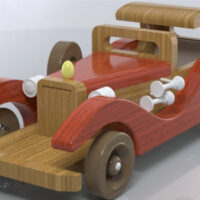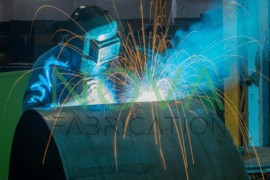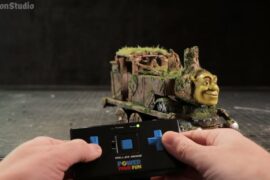STL files have been around for a while. It was originally developed as a bridge between CAD files and 3D Systems’ first 3D printers. It has become the standard format for 3D printing, but it’s increasingly seen as antiquated and limited. In reality, an STL file describes a shape and not much else. In addition, a complex shape can often make the file massive and unwieldy. And, STL cannot effectively utilize all the advances in multi-material printing. So, what else is there?
Additive Manufacturing Format (AMF)
Enter… the Additive Manufacturing Format.
The brainchild of Hod Lipson and Jonathan Hiller of Cornell University, AMF was created to solve these problems and fill the gap between CAD designers and 3D printing companies. On May 2, 2011 ASTM International (the Standardistas as I prefer to call them) introduced AMF as a new open standard for 3D printing. Written in XML, AMF describes colour, material, texture and mesostructures.
Using AMF, you can take a single shape and repeat it in different orientation and locations. Using this function, one can craft a necklace and save an immense amount of space and information – Geometric fidelity whilst reducing file size is a major component of AMF. Like any STL file, an AMF is made up of triangles. However, in its compressed form, an AMF file is a simplified set of triangles with a set of scripts defining edge curves and shape details. AMF 1.1 was released in early April and efforts are now going into ways of reducing the file size by an additional 1000 times.

AMF seems like the real thing. Yet adoption has been slow. Already there is an AMF editor which can carry out STL/AMF import/exporting and object editing (Download here). Polygonica, a Polygon Solidmodelling toolkit for MachineWorks has begun using AMF. Nigel Starling, Senior Software Engineer commented, “As a developer I was impressed with the clarity of the specification and we were able to quickly develop the XML parser and encoder for the 3-d geometry.” No word from Autodesk, Dassualt or any other 3D software company on adopting AMF – word is that there is something going on ‘behind-the-scenes’ though. As Hod Lipson said, “There is somewhat of a chicken and egg challenge: Who should adopt first: CAD companies? Equip manufacturers?”
It’s a real pity actually. AMF seems to hold the key to unlocking the full potential of 3D printing for designers. 3D printing is a tool, and a tool is only as useful as one is able to wield it. This could be the kind of grip a good designers needs to wring the best results out his or her 3D printer. It makes sharing and customization easier, aiding the community and the consumer as well. AMF is simple and small. Have a large, complicated file? Convert the STL into AMF and send it. Need a longer necklace? Simply specify the length. Need a different colour? Change the colour. Want to incorporate multiple materials and specify exactly where it goes? No biggie. AMF has got it covered.
Godspeed AMF!






